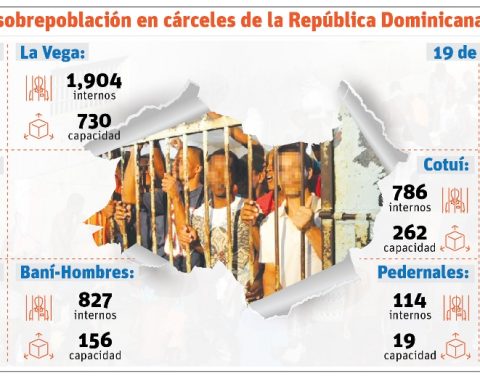Given the upward path of the interest rates of the loans banks, as a consequence of the restrictive monetary policy to contain inflation, the Multiple Banks Association of the Dominican Republic (ABA) estimates that the up cycle can begin to reverse if the decrease in the inflation.
“Fortunately, the inflation It already shows signs of returning to the levels expected by the Central Bank,” the ABA declared in writing to Free Daily. In the short-medium term, the expectation is that this up cycle of rates can begin to overcome and reversethat is, a downward trend is expected in the interest rates, if the premises hold of decrease of the inflation”.
The inflation in january past was located at 0.63% and the YoY at 7.24%being 59 basis points below the 7.83% registered in December 2022 and less than the peak of 9.64 in April last year.
The goal that the Central Bank has set for itself is that the inflation converge to your range of 4% ± 1% during 2023.
Year-on-year inflation in January 2023, reported by the Central Bank of the Dominican Republic.
Your margins go down
In January 2022, the interest rate weighted average of a consumer loan or personal was 14.20%. Twelve months later, that is, in January 2023, rose to 18.68%for an increase of 4.49 percentage points.
According to the Ministry of Economy, this is a effect of the tight monetary policy adopted by the Central Bank, which led to a gradual increase in the current monetary policy interest rate from 3.00% to 8.50% annually. This increase also has an effect of increases in the interest rates of financial products.
“In line with the Monetary Policy, indeed, the weighted average active rates of multiple banks have reacted to this new environment in which the moneywhich is the input with which banks work, it has become more expensive. In that vein, the customers that they did not restructure their loans at fixed rates with monetary stimuli in the context of COVID, have faced some increases in their installments that to date are not reflected in delinquency levels, which have reached historical lows,” said the ABA.
The weighted average interest rate of the mortgage loans or development, went from 8.81% in January 2022 to 13.07% in January 2023, for a rise of 4.25 percentage points. While that of trade loans it varied 4.24 percentage points, going from 8.44 to 12.68%.
The Central Bank once again leaves its monetary policy interest rate at 8.50%
“Increases in active rates (those that the client pays to the bank when taking out a loan), reflected in the Weighted Average Rate (TAPP) have occurred with less intensity compared to the passive rate (the one paid to savers), which has experienced increases faster”, indicates the ABA.
“Between December 2021 and December 2022 -he adds-, the TAPP in national currency increased by 427 basis points, while the passive rate Weighted Average (TPPP) did it at 762 basis points”.
Accordingly, the ABA notes that the financial intermediation margins with which banks operate (difference between lending and deposit rates) have narrowed considerably, going from 691 basis points in December 2021 to 356 basis points in December 2022, “reaching lows not observed in decades”.
“This decision by the banks has as a background, the protection of the payment capacity of their debtors, absorbing part of the increase in the TPM and, likewise, protecting the purchasing power of savers punished by inflation”, he assures.

















